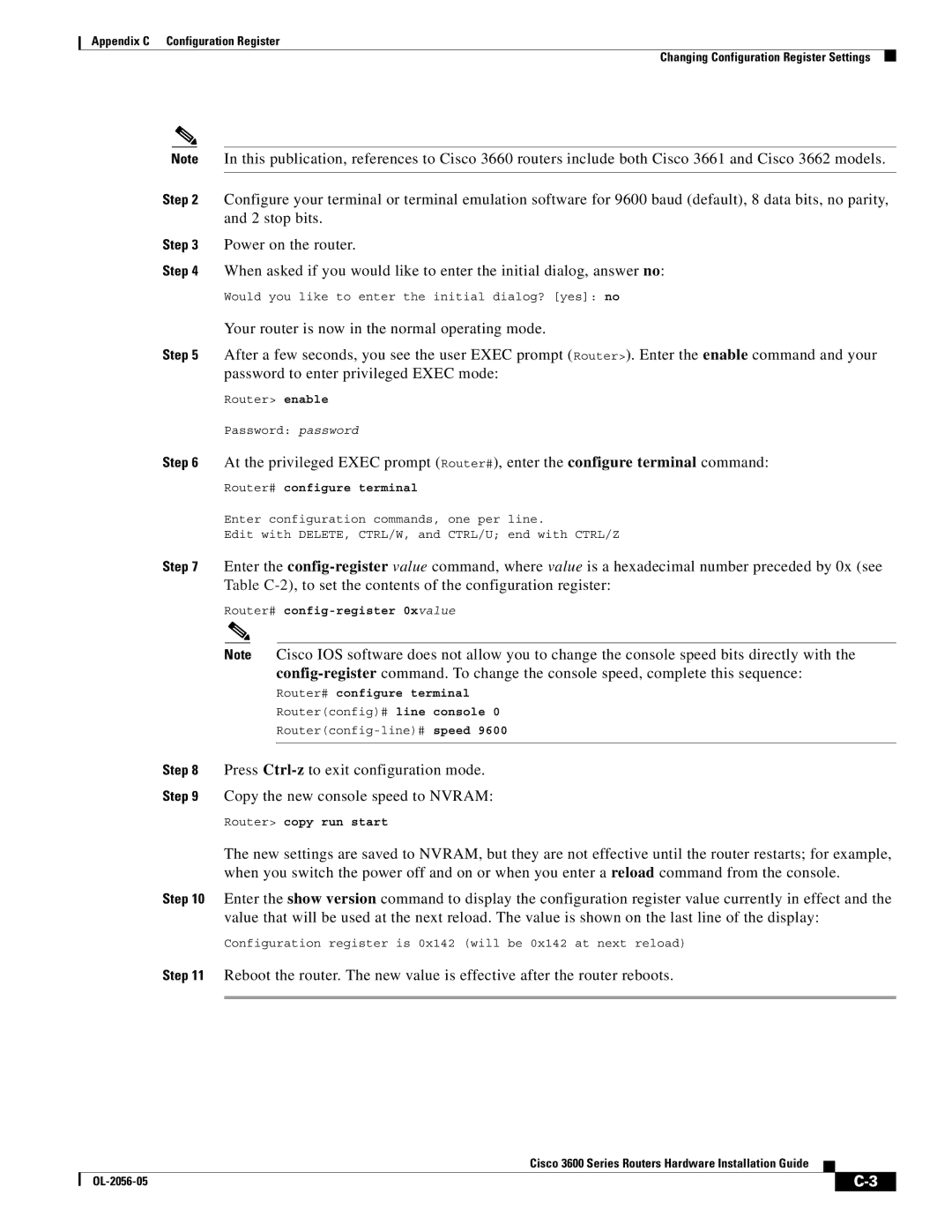
Appendix C Configuration Register
Changing Configuration Register Settings
Note In this publication, references to Cisco 3660 routers include both Cisco 3661 and Cisco 3662 models.
Step 2 Configure your terminal or terminal emulation software for 9600 baud (default), 8 data bits, no parity, and 2 stop bits.
Step 3 Power on the router.
Step 4 When asked if you would like to enter the initial dialog, answer no:
Would you like to enter the initial dialog? [yes]: no
Your router is now in the normal operating mode.
Step 5 After a few seconds, you see the user EXEC prompt (Router>). Enter the enable command and your password to enter privileged EXEC mode:
Router> enable
Password: password
Step 6 At the privileged EXEC prompt (Router#), enter the configure terminal command:
Router# configure terminal
Enter configuration commands, one per line.
Edit with DELETE, CTRL/W, and CTRL/U; end with CTRL/Z
Step 7 Enter the
Router# config-register 0xvalue
Note Cisco IOS software does not allow you to change the console speed bits directly with the
Router# configure terminal
Router(config)# line console 0
Step 8 Press
Step 9 Copy the new console speed to NVRAM:
Router> copy run start
The new settings are saved to NVRAM, but they are not effective until the router restarts; for example, when you switch the power off and on or when you enter a reload command from the console.
Step 10 Enter the show version command to display the configuration register value currently in effect and the value that will be used at the next reload. The value is shown on the last line of the display:
Configuration register is 0x142 (will be 0x142 at next reload)
Step 11 Reboot the router. The new value is effective after the router reboots.
Cisco 3600 Series Routers Hardware Installation Guide
| ||
|
